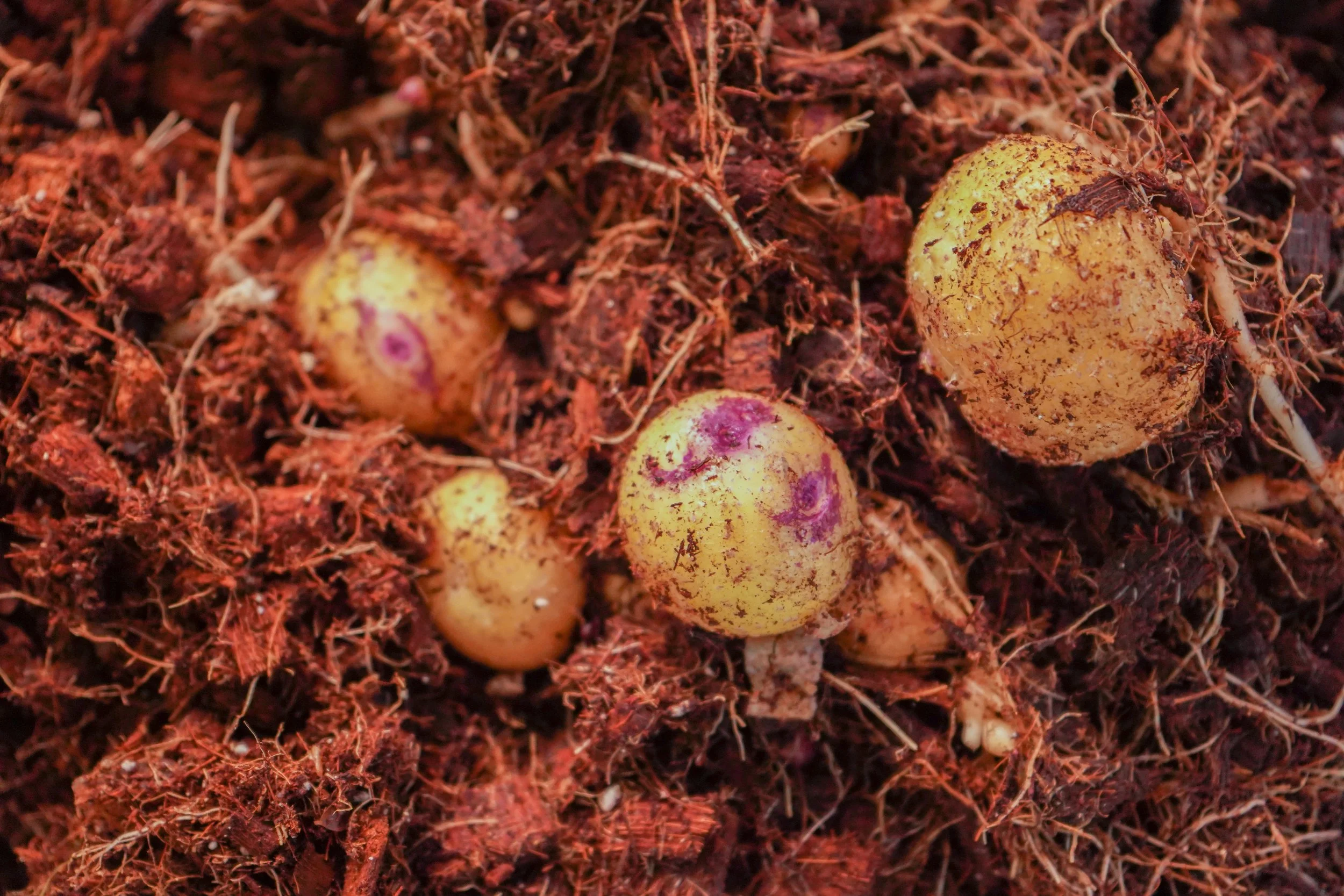Anthocyanin
What are anthocyanins?
Have you ever noticed that the color blue is relatively scarce in nature? This scarcity makes the blue hues found in certain foods, such as blueberries, all the more intriguing.
The captivating blue color of blueberries is a result of a remarkable class of pigments known as anthocyanins. These compounds not only contribute to the visual allure of blueberries but also hold fascinating scientific and biological significance.
Anthocyanins are type of phytochemical belonging to a larger class of compounds called flavonoids. These natural pigments are responsible for the vibrant red, purple, and blue colors found in various fruits, vegetables, flowers, and even some grains. On our farm you can find them in our ‘Blue Eyes” potatoes.
Apart from providing vivid colors, anthocyanins also serve important functions in plants. They act as protective agents, shielding plant tissues from environmental stressors such as UV radiation and acting as natural antioxidants to neutralize harmful free radicals. Anthocyanins also attract pollinators and seed dispersers, playing a role in plant reproduction.
Antioxidant properties:
Beyond their visual allure, anthocyanins possess powerful antioxidant properties. These antioxidants help protect our cells from damage caused by harmful free radicals, supporting overall health and well-being. Studies suggest that diets rich in anthocyanin-rich foods may help reduce the risk of chronic diseases, including heart disease, certain cancers, and age-related cognitive decline.
Health Benefits:
The health benefits associated with anthocyanin consumption are far-reaching. These colorful compounds have been linked to anti-inflammatory effects, improved cardiovascular health, enhanced immune function, and even potential anti-cancer properties. Adding anthocyanin-rich foods to your diet can be a flavorful way to nourish your body and boost your overall health.


